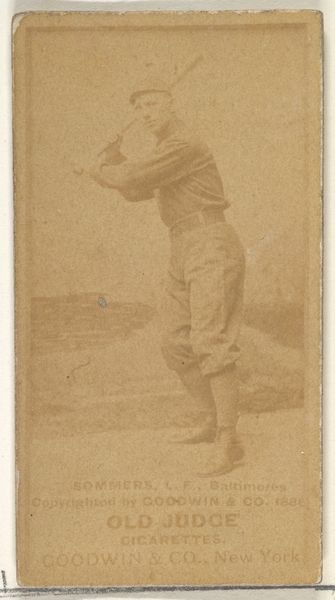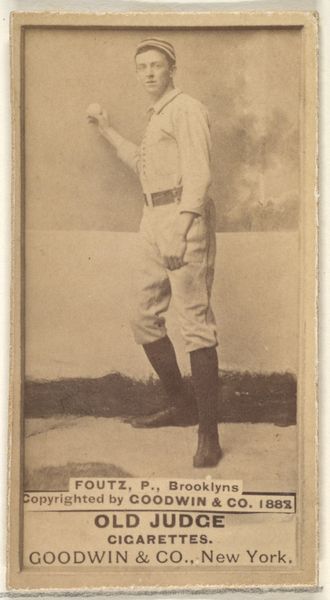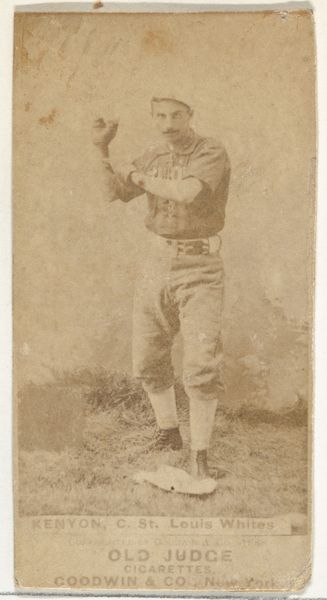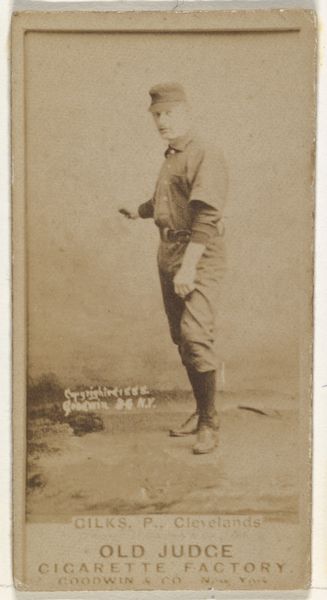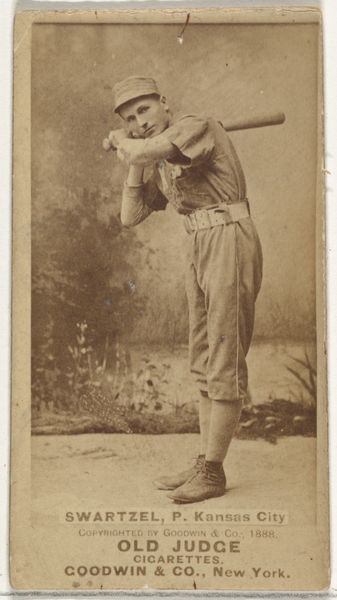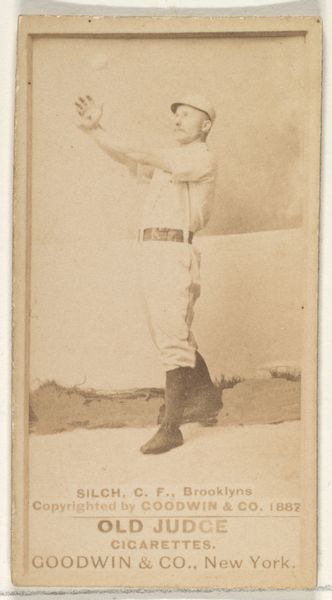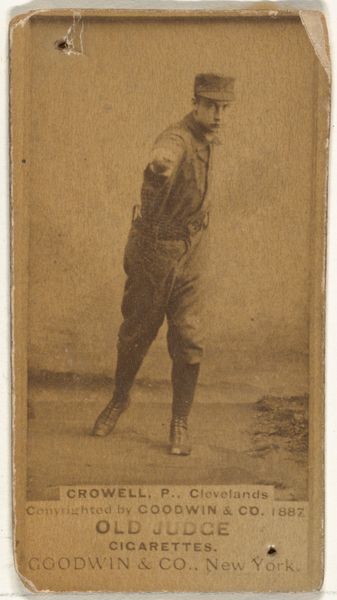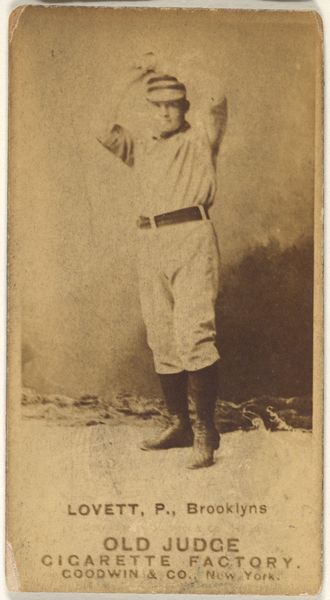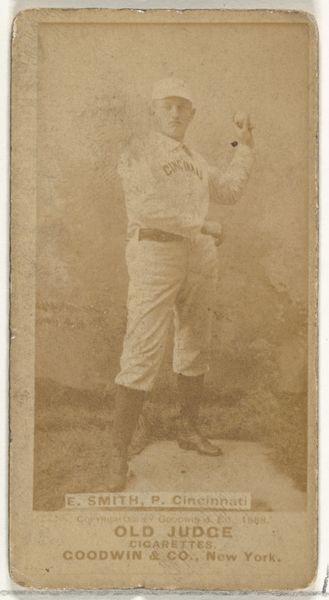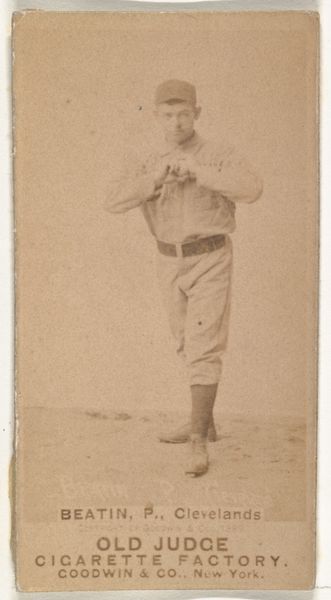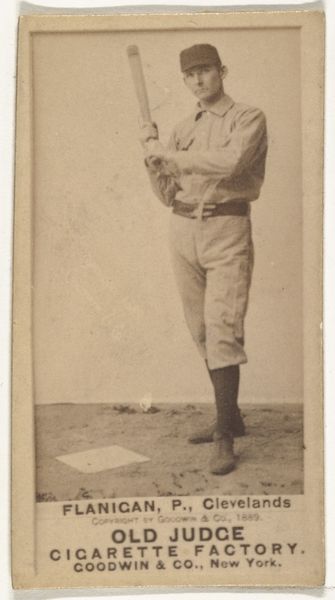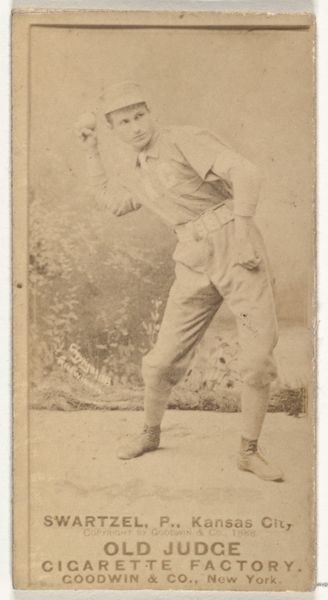
William Theodore "Billy" Crowell, Pitcher, Cleveland, from the Old Judge series (N172) for Old Judge Cigarettes 1887
0:00
0:00
print, photography, albumen-print
#
portrait
# print
#
baseball
#
photography
#
albumen-print
#
realism
Dimensions: sheet: 2 11/16 x 1 3/8 in. (6.9 x 3.5 cm)
Copyright: Public Domain
Curator: Here we have a fascinating albumen print dating back to 1887. It's titled "William Theodore 'Billy' Crowell, Pitcher, Cleveland," and it comes from the Old Judge series (N172) created for Old Judge Cigarettes. Goodwin & Company was behind it. Editor: It's remarkable how clear this image is, even after all these years. I’m immediately struck by the contrast between the formal studio setting and the inherently dynamic sport it represents. Curator: Precisely. The photograph functions as both a portrait and a piece of commercial ephemera. It reveals a lot about how celebrity and marketing intersected in the late 19th century. Cigarette cards like this one were instrumental in popularizing baseball and individual players. It’s interesting to note that tobacco companies became major players in the culture industry at the time. Editor: I'm intrigued by the material object itself. It served as a tangible promotional item. It's all about the cigarette factories utilizing photographic processes for the mass reproduction of celebrity images. We can really consider the interplay of labor involved in cultivating tobacco, manufacturing cigarettes, taking and printing photos, and the consumption of both tobacco and celebrity. Curator: Exactly. Also, let’s consider the social implications of disseminating Crowell's image so widely. For young fans, seeing him displayed might foster aspiration and ideas about national identity through this emerging sport. It shaped their perceptions and solidified baseball's prominent cultural role. Editor: Thinking about material consumption, how quickly this photograph would've circulated! Perhaps traded, collected, discarded with the cigarette pack… its inherent disposability as advertising raises interesting questions about how value is assigned to images and the labor involved in their making and distribution. The material is so unassuming. Curator: And to conclude, reflecting on the photograph's function: was it primarily about celebrating Crowell's skill or selling cigarettes? In truth, it fulfilled both aims seamlessly, shaping both the marketplace and collective cultural memory. Editor: Absolutely. It prompts us to really reflect on the networks of labor, materials, and the machinery of representation at play, making Crowell’s image both ephemeral and enduring.
Comments
No comments
Be the first to comment and join the conversation on the ultimate creative platform.
